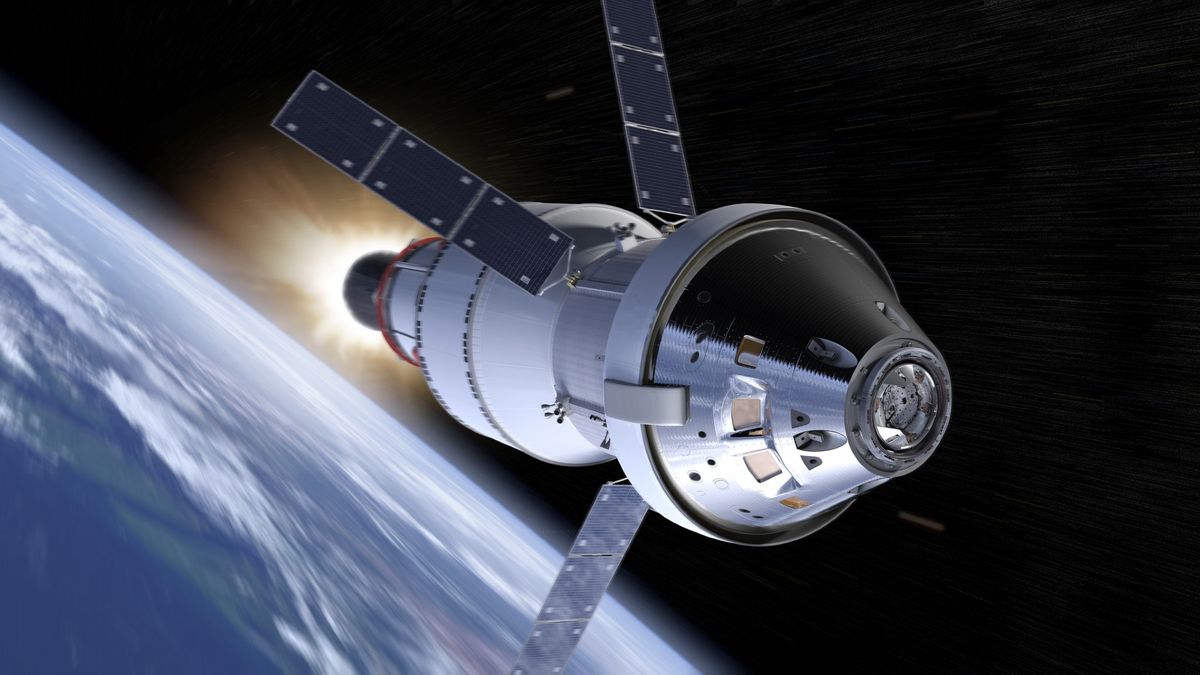prekforalldc.org – The Orion spacecraft is a testament to human ingenuity and the relentless pursuit of exploration. Developed by NASA in collaboration with the European Space Agency (ESA) and led by Lockheed Martin, Orion is designed to take humans farther than they have ever gone before. This advanced spacecraft is the cornerstone of NASA’s deep space exploration plans, with the ultimate goal of sending humans to Mars and beyond.
Design and Capabilities:
The Orion spacecraft is composed of two primary elements: the Crew Module (CM) and the Service Module (SM). The Crew Module is where the astronauts will live during their journey, featuring advanced life support systems, windows to observe the cosmos, and a spacecraft adapter that connects it to the launch vehicle. The Service Module provides the necessary propulsion, power, and heat rejection systems to support the crew’s journey.
Orion is designed to be versatile, capable of supporting missions to multiple destinations in deep space. It can carry up to six astronauts to destinations such as the Moon, asteroids, and eventually Mars. The spacecraft is equipped with advanced technologies to ensure the safety and comfort of the crew, including radiation shielding and a state-of-the-art heat shield to withstand the intense temperatures of re-entry into Earth’s atmosphere.
The Orion spacecraft also features an emergency abort system, which can pull the crew to safety in the event of a launch vehicle failure. This system ensures that the crew can safely return to Earth if an issue arises during the critical launch phase.
Development and Testing:
The development of the Orion spacecraft has been a journey of its own, with rigorous testing to ensure its readiness for deep space missions. NASA has conducted several uncrewed test flights to validate the spacecraft’s systems and capabilities.
One of the most significant milestones was the Exploration Flight Test-1 (EFT-1) in December 2014, where an uncrewed Orion spacecraft was launched atop a Delta IV Heavy rocket. This test flight demonstrated the spacecraft’s ability to withstand the stresses of launch and re-entry, reaching an altitude of over 5,800 kilometers (3,600 miles) and traveling at speeds of up to 32,000 kilometers per hour (20,000 miles per hour).
The Artemis Program:
The Orion spacecraft is central to NASA’s Artemis program, which aims to return humans to the Moon and establish a sustainable human presence there by the end of the 2020s. Artemis I, an uncrewed test flight of the Space Launch System (SLS) and Orion, is scheduled to be the first in a series of increasingly complex missions to enable human exploration to the Moon and Mars.
Artemis I will send an uncrewed Orion spacecraft on a journey thousands of miles beyond the Moon during an approximately 25.5-day mission. This test will demonstrate Orion’s ability to sustain human life in deep space, navigate to and from the Moon, and safely return to Earth.
Future Missions:
With each successful test flight, the Orion spacecraft moves closer to carrying astronauts on deep space missions. The Artemis II mission is planned to be the first crewed flight of Orion, scheduled to take astronauts on a lunar flyby. Following this, Artemis III will aim to land astronauts on the Moon, including the first woman and the next man on the lunar surface.
Beyond the Moon, Orion is the key to NASA’s Mars exploration plans. The spacecraft will serve as the crew’s home during the long journey to the Red Planet, providing the necessary life support and protection from cosmic radiation.
Conclusion:
The Orion spacecraft represents a significant step forward in human space exploration. Its development and testing mark the beginning of a new era of deep space exploration, with the potential to unlock the mysteries of our solar system and beyond. As NASA and its international partners continue to refine and improve the Orion spacecraft, the dream of Mars and other distant worlds becomes increasingly within reach. The Orion spacecraft is not just a vehicle; it is a symbol of human curiosity and the indomitable spirit of exploration that drives us to venture into the unknown.
